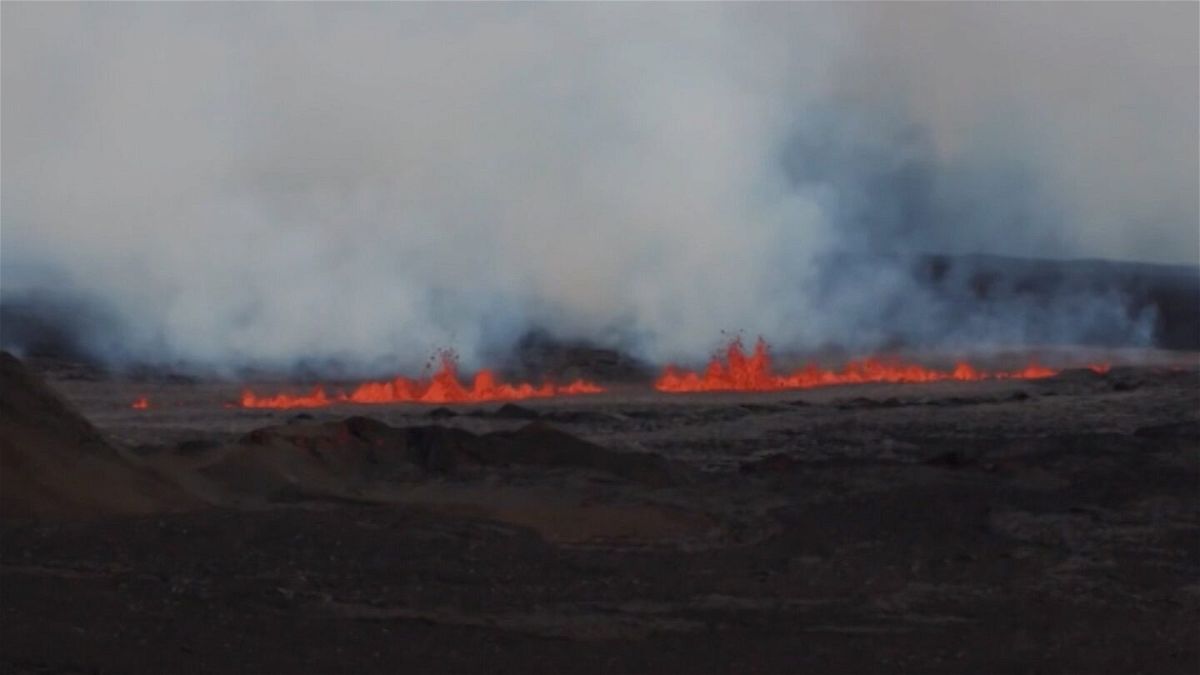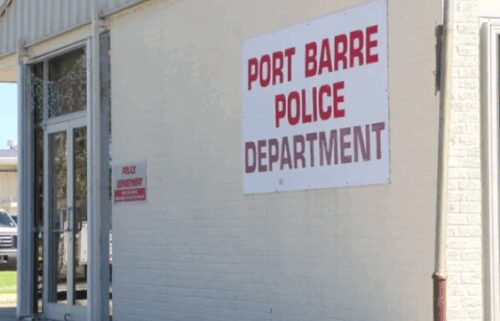2 new lava flows cascade down Mauna Loa as Hawaii sees neighboring volcanoes erupting

Originally Published: 29 NOV 22 02:14 ET
Updated: 29 NOV 22 13:54 ET
By Elizabeth Wolfe and Holly Yan, CNN
(CNN) -- The rare sight of two neighboring volcanoes erupting simultaneously became even more astounding Tuesday as new lava flows gushed down slopes on Hawaii's Big Island.
Mauna Loa, the world's largest active volcano, erupted this week for the first time in 38 years. Its neighbor Kilauea, which is also in Hawai'i Volcanoes National Park, has been erupting for more than a year.
On Tuesday, two new lava flows were seen streaming down Mauna Loa, the US Geological Survey said.
At just 21 miles apart, Mauna Loa and Kilauea have not erupted together since 1984, when Mauna Loa last erupted.
Neither volcano is threatening homes or nearby infrastructure, the national park said. But state health officials warned air quality could be worsened by hazards such as vog, or volcanic smog.
The rare dual-eruption event is expected to attract an influx of visitors eager to see the molten flows, the national park said in a Facebook post.
Fountains of lava as tall as 200 feet burst from Mauna Loa on Monday, the geological survey said. The eruption was concentrated in Mauna Loa's Northeast Rift Zone, where lava is flowing from at least one split in the volcano, the geological survey said.
Volcanic gas, fine ash and Pele's Hair (strands of volcanic glass) could be carried downwind, the agency said.
Officials are keeping a careful eye on the site to monitor any developments.
"Based on past events, the early stages of a Mauna Loa rift zone eruption can be very dynamic, and the location and advance of lava flows can change rapidly," the geological survey said in a Monday update.
Though there is no immediate risk to communities, Hawaii's National Guard is on standby and the state Emergency Management Agency has activated its emergency operations center, Major General Ken Hara, adjutant general for the State of Hawaii Dept. of Defense said during a news conference.
Kilauea, a much smaller volcano sitting on Mauna Loa's southeastern side, has been erupting since September 2021, though its lava is confined to its crater, according to the US Geological Survey. When the incredibly active volcano erupted for months in 2018, it spewed lava into the Leilani Estates neighborhood, destroying more than 700 homes and displacing residents.
The Hawaiʻi Volcanoes National Park remains open but cautions visitors hoping to witness the historic eruptions to be aware of the cultural significance the sites have for Native Hawaiians.
"While an eruption is an exciting experience, keep in mind you are observing a sacred event. Kīlauea and Mauna Loa volcano are wahi kapu (sacred landscapes) surrounded with storied places," the park's website says.
The eruption of Mauna Loa prompted the closure of the Mauna Loa Forest Reserve and the Kipuka 'Ainahou Nēnē Sanctuary for at least 90 days, the Hawaii Department of Land and Natural Resources Division of Forestry and Wildlife (DOFAW) announced Monday.
The division expressed concern that if lava changes course and flows into the Puʻu Makaʻala Natural Area Reserve, years of work restoring the land after previous eruptions could be destroyed.
Volcanic ash impacts air quality, flights
Hawaii Gov. David Ige cautioned Monday that the wind could carry volcanic gas and ash and asked residents with respiratory sensitivities to take precautions to minimize exposure.
A "trace to less than one quarter inch" of ashfall could accumulate on parts of the island, the National Weather Service in Honolulu said Monday.
The Hawaii Department of Health issued an alert Monday warning residents and visitors should prepare for impacts to air quality, saying the eruptions could cause "vog conditions, ash in the air, and levels of sulfur dioxide to increase and fluctuate in various areas of the state."
Sensitive groups, including children, the elderly and those with respiratory conditions should reduce outdoor activities that cause heavy breathing and reduce exposure by staying indoors and closing windows and doors, should vog conditions develop, the health department said.
Volcanic ash clouds can also pose a serious aviation risk, reducing visibility, damaging flight controls and ultimately causing jet engines to fail.
Southwest Airlines stopped operations from Hilo International Monday because of the eruption, the airline announced. It has canceled five flights to and from Honolulu, Southwest said.
"Passengers with flights to Hilo International Airport (ITO) or the Ellison Onizuka Kona International Airport at Keahole (KOA) should check with their airline prior to heading to the airport due to the volcanic activity at Mauna Loa," according to an advisory from the state Transportation Department.
The US Federal Aviation Administration is "closely monitoring the volcanic eruption and will issue air traffic advisories once the size of the ash cloud is determined," it said in a statement.
The-CNN-Wire
™ & © 2022 Cable News Network, Inc., a Warner Bros. Discovery Company. All rights reserved.



